Since 2009 the group has been working on research projects in the field of catheter based interventions for congenital heart defects. The group is based in the German Heart Institute Berlin in the department of congenital heart disease. The team members come from a wide range of disciplines which provides a wide array of expertise, know-how and ways of thinking. This is a benefit for a research group: think outside the box, look at it from a different angle.
The close interaction between different scientific disciplines allows for a quick translation from idea to implementation.
Passing on knowledge and receiving input from various sides. This is why we try to constantly involve students in our daily work. The students have come from the areas of Medicine, Mechanical Engineering, Biosystems Technology and Cardiovascular Perfusion.
More information about education
KidCathCardioLab - Dr. med. Boris Schmitt, schmitt@DHZB.de
Contact

The goal of the Lifevalve Project is to develop a tissue engineered heart valve fixed in a biodegradable stent suitable for catheter based minimally invasive implantation procedure. It is a collaborative project funded by the European Union under the Seventh Framework Programme, with partners in Switzerland (coordinator), Germany, the Netherlands, Austria and Hungary, from SMEs and research organizations. The interdisciplinary approach combines basic sciences, engineering and medical research.
The partner Deutsches Herzzentrum Berlin (DHZB), respectively the Department of Congenital Heart Defects with members of the research group KidCath♥Lab, is responsible for development of a loading and delivery device, for establishment of the implantation procedure, for testing of the valve in short- and long-term follow-up and also for preparation of the first clinical study.
More information about the research project LifeValve
A developed lung marks the crucial step from fetus to an extrauterine, independent being. Premature infants, who are born before the regular date of birth, often suffer from an immaturity of the lungs: they are not ready for life outside the uterus. Underdevelopement of the lungs can result in bronchopulmonary dysplasia which is a chronic lung disorder highly common among prematurely born children
Preterm infants with breathing difficulties are usually ventilated mechanically with either intermitting positive ventilation and /or continuous positive airway pressure to support lung maturation by opening the lung alveoli. After birth, the establishment of an optimal lung volume (functional residual capacity, FRC) represents a decisive factor for an optimal lung maturation.
More information about HighPeep
The goal of the liquid Home project is to develop a liquid incubator for premature infants in which the early premature phase (24th to 28th week of pregancy) can be bridged until the lungs, circulatory system and the central nervous system of the infant are sufficiently developed a life outside the uterus is more feasible and that the risk of impairments is limited.
More information about LiquidHome
Primäres Ziel des Projektes ist die Erforschung innovativer und besonders schonender Konzepte zur Schrittmacher-Versorgung von Kindern und Erwachsenen mit angeborenen Herzfehlern. KidCathCardiolab entwickelt hierfür eine neuartige Methode zur minimal-invasiven Implantation sogenannter epikardialer Schrittmacher-Elektroden. Diese werden mit steuerbaren Kathetern direkt auf der Herzoberfläche befestigt ohne das, wie bisher notwendig, eine Öffnung des Brustkorbes erforderlich wird. Die eingesetzten Elektrodenkomponenten werden darüber hinaus hinsichtlich ihrer ferromagnetischen Eigenschaften in starken Magnetfeldern evaluiert um langfristig auch die Durchführung einer Kernspintomographie (MRT) zu ermöglichen. Diese sogenannte MRT-Konditionalität ist bei allen derzeitig verfügbaren epikardialen Elektroden nicht gegeben.
More information about the Berlin Epicardial Lead Project
In minimally invasive catheter intervantions imaging techniques are essential. There is no incision that opens the body so other modalities have to be used to let the interventionist "look" inside the patient.
More information about Imaging